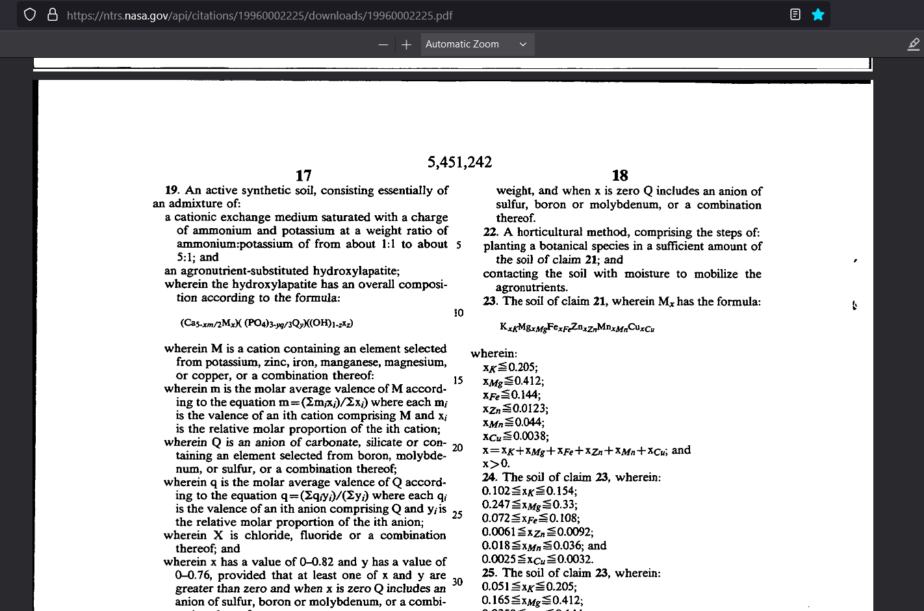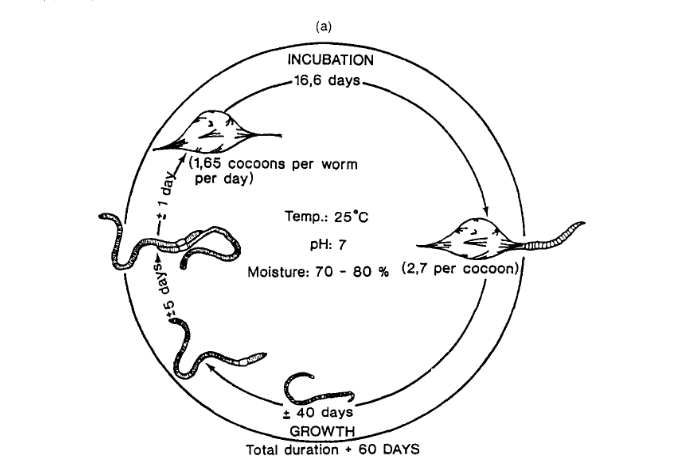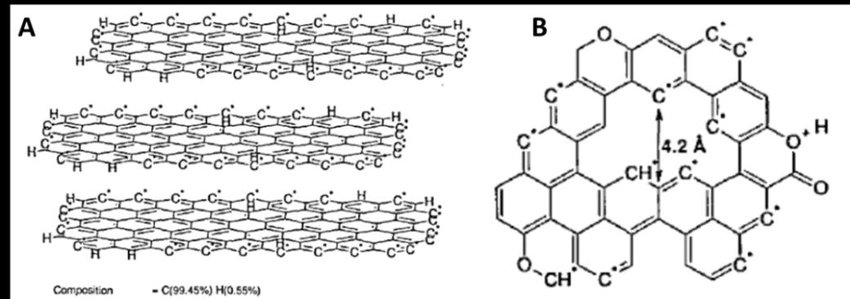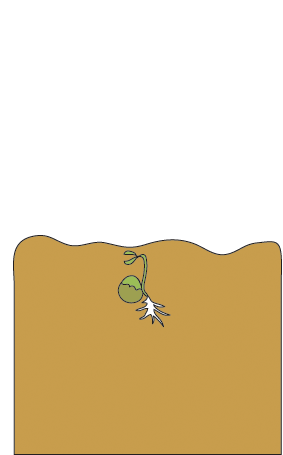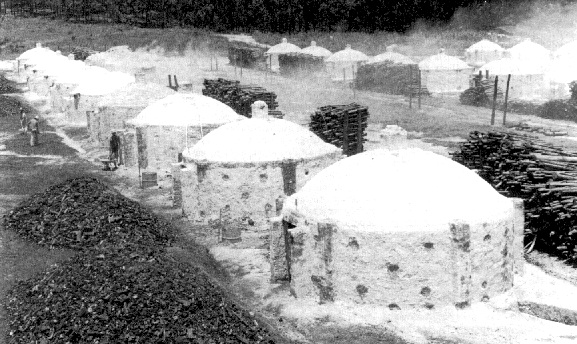Inventors:
Douglas W. Ming;
Donald L. Henninger, both of Houston, Tex.;
Earl R. Allen, Stillwater, Okla.;
Dadigamuwage C. Golden, Houston, Tex.
The United States of America as represented by the Administrator of the National Aeronautics and Space Administration, Washington, D.C
https://ntrs.nasa.gov/api/citations/19960002225/downloads/19960002225.pdf
19960002225ABSTRACT
A synthetic soil/fertilizer for horticultural application having all the agronutrients essential for plant growth is disclosed. The soil comprises a synthetic apatite fertilizer having sulfur, magnesium and micronutrients dispersed in a calcium phosphate matrix, a zeolite cation exchange medium saturated with a charge of potassium and nitrogen cations, and an optional pH buffer. Moisture dissolves the apatite and mobilizes the nutrient elements from the apatite matrix and the zeolite charge sites.
Several notable innovations related to the development of a new type of fertilizer.
Here are some of the key innovations mentioned:
Synthetic Apatite Fertilizer
The primary innovation is the creation of a synthetic apatite fertilizer that combines the benefits of both apatite and zeolite minerals. This fertilizer is designed to provide a slow-release source of nutrients while also improving soil properties.
Micronutrient Substitution
The synthetic apatite is innovatively substituted with various micronutrients, such as zinc, iron, manganese, magnesium, and copper. This substitution allows for the controlled release of these essential micronutrients along with the primary nutrients (phosphorus and calcium) found in apatite.
Ion Exchange Properties
The fertilizer incorporates zeolite, which has unique ion exchange properties. This allows the fertilizer to:
- Retain nutrients in the soil, reducing leaching
- Slowly release nutrients as plants require them
- Potentially improve soil water retention
Customizable Formulations
The patent describes methods for creating customized fertilizer formulations by adjusting:
- The ratio of apatite to zeolite
- The types and amounts of micronutrients substituted into the apatite structure
- The specific type of zeolite used (e.g., clinoptilolite, chabazite, mordenite)
This allows for the creation of tailored fertilizers for specific crops or soil conditions.
Environmentally Friendly Approach
The innovation aims to reduce environmental impact by:
- Minimizing nutrient runoff and groundwater contamination
- Potentially reducing the frequency of fertilizer applications
- Utilizing natural minerals (zeolites) in combination with synthetic apatites
- Potential for Space Agriculture
Interestingly, the patent mentions potential applications in space agriculture, suggesting that this fertilizer technology could be useful for growing plants in extraterrestrial environments with limited resources.
These innovations collectively represent a significant advancement in fertilizer technology, aiming to improve nutrient delivery efficiency while reducing environmental impact.
While the patent doesn’t introduce entirely new technologies in the traditional sense, it does present several innovative approaches and combinations that could be considered groundbreaking in the field of fertilizer development and agricultural technology. Here are some of the most significant aspects:
Synthetic Micronutrient-Substituted Apatites
The creation of synthetic apatites with substituted micronutrients is a key innovation. This technology allows for the precise control of nutrient composition and release, which is a significant advancement over traditional fertilizers.
Zeolite-Apatite Combination
The combination of synthetic apatites with natural zeolites creates a unique fertilizer system that leverages the benefits of both materials. This synergistic approach is novel and potentially groundbreaking in its ability to control nutrient release and retention.
Controlled Release Mechanism
The patent describes a sophisticated controlled release mechanism that utilizes the natural properties of both apatites and zeolites. This system allows for the gradual dissolution of nutrients based on plant needs and environmental conditions, which is a significant improvement over conventional fertilizers.
Customizable Nutrient Profiles
The ability to tailor the nutrient profile of the fertilizer by adjusting the composition of the synthetic apatite and the choice of zeolite is a flexible and innovative approach to fertilizer design.
Potential for Extraterrestrial Agriculture
While not fully developed in the patent, the mention of potential applications in space agriculture suggests a forward-thinking approach to fertilizer technology that could be groundbreaking for future space exploration and colonization efforts.
Environmental Impact Reduction
The technology’s focus on reducing nutrient leaching and improving soil water retention represents a groundbreaking approach to addressing major environmental concerns associated with traditional fertilizers.
While these technologies may not be entirely new in isolation, their combination and application in this specific context represent a potentially groundbreaking approach to fertilizer development. The patent leverages existing knowledge of mineral properties and combines them in novel ways to create a more efficient and environmentally friendly fertilizer system.
The patent discusses several aspects related to cations in the context of the fertilizer system it describes. Here are the key points about cations mentioned in the patent:
Cation Exchange Capacity
The patent emphasizes the importance of the cation exchange capacity (CEC) of zeolites, which is a crucial feature of the fertilizer system. Zeolites have a high CEC, allowing them to hold and exchange various cations.
https://www.youtube.com/watch?v=8fJojcqF978
Specific Cations
The patent mentions several specific cations that are involved in the fertilizer system:
- Ammonium (NH4+) : This cation is particularly important as it can be exchanged with other cations in the zeolite structure.
- Potassium (K+) : Mentioned as one of the essential plant nutrients that can be held by the zeolite.
- Calcium (Ca2+) : A major component of the apatite structure and an important plant nutrient.
- Magnesium (Mg2+) : Listed as one of the micronutrients that can be substituted into the apatite structure.
- Zinc (Zn2+) , Iron (Fe2+/Fe3+) , Manganese (Mn2+) , and Copper (Cu2+) : These are mentioned as micronutrients that can be incorporated into the apatite structure.
Cation Exchange Process
The patent describes how the zeolite component of the fertilizer can exchange cations with the surrounding soil solution. This process allows for the retention and slow release of nutrient cations.
Ammonium Exchange
A specific focus is placed on the ability of zeolites to exchange ammonium ions. This is highlighted as a beneficial feature for nitrogen retention in the soil.
Cation Selectivity
The patent notes that different zeolites have varying selectivities for different cations. This property can be used to tailor the fertilizer for specific nutrient needs.
pH Effect on Cation Exchange
The document mentions that the cation exchange properties of the fertilizer system can be influenced by soil pH, which affects the dissolution of the apatite component and the availability of cations.
This comprehensive approach to managing cations through the combination of synthetic apatites and natural zeolites is a key innovation of the fertilizer system described in the patent.
The patent mentions several specific cations in the context of the fertilizer system it describes. Here’s a list of the cations explicitly mentioned:
- Ammonium (NH4+)
- Potassium (K+)
- Calcium (Ca2+)
- Magnesium (Mg2+)
- Zinc (Zn2+)
- Iron (Fe2+/Fe3+)
- Manganese (Mn2+)
- Copper (Cu2+)
- Sodium (Na+)
These cations are mentioned in various contexts within the patent:
Nutrient Cations
Calcium, magnesium, zinc, iron, manganese, and copper are discussed as important plant nutrients that can be incorporated into the synthetic apatite structure of the fertilizer.
Exchange Cations
Ammonium and potassium are highlighted for their role in the cation exchange processes within the zeolite component of the fertilizer.
Structural Cations
Calcium is a key structural component of the apatite mineral.
Competing Cations
Sodium is mentioned as a cation that can compete with other nutrient cations in the zeolite’s exchange sites.
The patent emphasizes the importance of these cations in the overall functionality of the fertilizer system, particularly in terms of nutrient provision and the controlled release mechanism facilitated by the zeolite’s cation exchange properties.
Based on the information provided in the patent and the search results, the cations mentioned in the patent contribute significantly to the overall efficiency of the fertilizer technology in several ways:
- Nutrient Provision: The patent mentions calcium (Ca2+), magnesium (Mg2+), zinc (Zn2+), iron (Fe2+/Fe3+), manganese (Mn2+), and copper (Cu2+) as important plant nutrients[4]. These cations are incorporated into the synthetic apatite structure, allowing for their controlled release to plants.
- Controlled Release Mechanism: The zeolite component of the fertilizer has a high cation exchange capacity (CEC) [1] https://nutrien-ekonomics.com/news/cation-exchange-and-its-role-in-soil-fertility/ [6] https://www.dpi.nsw.gov.au/agriculture/soils/guides/soil-nutrients-and-fertilisers/cec. This allows it to hold onto positively charged nutrient cations and release them slowly, improving nutrient use efficiency and reducing leaching.
- Ammonium Retention: The patent specifically mentions ammonium (NH4+) as an important cation. Zeolites have a high affinity for ammonium, which helps retain nitrogen in the soil and reduce losses [4] https://www.holganix.com/blog/what-is-cation-exchange-capacity [7] https://extension.uga.edu/publications/detail.html?number=C1040&title=cation-exchange-capacity-and-base-saturation.
- Potassium Availability: Potassium (K+) is mentioned as another essential nutrient. The zeolite’s ability to hold and exchange potassium improves its availability to plants [6] https://www.dpi.nsw.gov.au/agriculture/soils/guides/soil-nutrients-and-fertilisers/cec [7] https://extension.uga.edu/publications/detail.html?number=C1040&title=cation-exchange-capacity-and-base-saturation.
- Soil pH Management: The balance of basic cations (Ca2+, Mg2+, K+) and acidic cations (H+, Al3+) held by the zeolite can influence soil pH [7] https://extension.uga.edu/publications/detail.html?number=C1040&title=cation-exchange-capacity-and-base-saturation[8] https://www.ctahr.hawaii.edu/mauisoil/c_relationship.aspx.
This can help maintain optimal pH for nutrient availability. - Customizable Nutrient Ratios: The ability to adjust the ratios of different cations in the fertilizer allows for customization based on specific crop needs or soil conditions [9] https://www.extension.purdue.edu/extmedia/ay/ay-238.html .
- Micronutrient Delivery: The incorporation of micronutrient cations like Zn2+, Fe2+/Fe3+, Mn2+, and Cu2+ into the apatite structure provides a mechanism for slow release of these essential elements [4] https://www.holganix.com/blog/what-is-cation-exchange-capacity.
- Reduced Environmental Impact: By holding onto cations more effectively, the fertilizer system reduces nutrient leaching, which can decrease environmental pollution [1] https://nutrien-ekonomics.com/news/cation-exchange-and-its-role-in-soil-fertility/ [5] https://www.permaculturenews.org/2016/10/19/soils-cation-exchange-capacity-effect-soil-fertility/.
- Improved Soil Structure: The exchange of cations can contribute to better soil structure, particularly in clay soils, which can improve water retention and root penetration [6] https://www.dpi.nsw.gov.au/agriculture/soils/guides/soil-nutrients-and-fertilisers/cec.
- Long-term Fertility: The high CEC of the zeolite component allows for a “banking” of nutrients, providing a more stable and long-lasting source of fertility.
By combining the cation-holding capacity of zeolites with the nutrient-rich composition of synthetic apatites, the patent describes a system that efficiently manages various cations for improved plant nutrition and soil health. This contributes to the overall efficiency of the technology by providing better nutrient retention, controlled release, and reduced environmental impact compared to conventional fertilizers.
Here are the citations presented in the patent, with links where available:
- Barbarick et al., “Response of Sorghum-sudangrass in Soils Amended with Phosphate Rock and NH4-exchanged Zeolite (Clinoptilolite)” Technical Bulletin, Colorado State Univ., Jun. 1988.
http://ccp14.cryst.bbk.ac.uk/ccp/ccp14/ftp-mirror/mudmaster-galoper/pub/ddeberl/EberlPapers/ExchangeFertilizer/ExFertYield.pdf - Casey et al., “Leaching of Mineral and Glass Surfaces During Dissolution,” Reviews in Mineralogy, Hochella, Jr. et al editors, vol. 23, pp. 397-426 (1990)
- Chesworth et al., “Solubility of Apatite in Clay and Zeolite Bearing Systems: Application to Agriculture,” Applied Clay Sciences, vol. 2, pp. 291-297 (1987)
https://www.sciencedirect.com/science/article/abs/pii/0169131787900384
- Golden, “Synthetic Micronutrient-Substituted Apatites as Direct Application Fertilizers,” Agronomy Abstracts, 1991 Annual Meeting, Oct. 27-Nov. 1, p. 365 (1991)
- Ming, “Fertilization of Mineral Dissolution and Ion Exchange,” Agronomy Abstracts, 1991, Annual Meeting, Oct 27-Nov. 1, p. 367 (1991).
- Ming et al., Space 92: The Third International Conference on Engineering, Construction and Operations in Space, Sadeh et al., editors, pp. 1709-1719 (1992).
- Resseler et al., “Preparation and use of 33P Labelled Carbonate Fluoroapatite in Studies on the Effect of Phosphate Rock Containing Fertilizers,” Z. Pflanzer- nernahr, Bodenk., 152:325-332 (1989)
- Smith et al., “An X-Ray Investigation of Carbonate Apatites,” Journal of Agricultural Food Chemicals, pp. 342-349 (1966)
- Van Vlack, Elements of Materials Science, Second Edition, pp. 74-79 (1966)
- Caro et al., Journal of Agriculture Food Chemistry, 4:684-687, 1956.
- McClelan et al., American Mineralogist, 54:1374-1391., Sep. 1969.
- Ming et al., “Fertilization by Mineral dissolution and Ion-Exchange,” Agronomy Abstracts, Soil Science Division, Oct. 27-Nov. 1, 1991.
- Resseler et al., Fertilizer Research, 20:135-143. 1989
- Ming, Lunar Base Agriculture: Soils for Plant Growth, Madison Wis.:ASA-CSSA-SSSA, pp. 93-105, 1989.
- MacKown et al., Soil Science Society American Journal, 49:235-238, 1985.
- Pirella et al., Zeo-Agriculture: Use of Natural Zeolites in Agriculture and Aquaculture, Pond et al., (ed.) Boulder Colo.: Westview Press, 1983.
- Ferguson et al., Soil Science Society American Journal, 51:231-234, 1987.
- Allen et al., Agronomy Abstracts, Soil Science Division S-2—Soil Chemistry, Nov. 27-Dec. 2, 1988.
- Parham, Zeo-Agriculture: Use of natural Zeolites in Agriculture and Aquaculture, Pond et al., (ed.) Boulder Colo.: Westview Press, 1983.
- Lewis et al., Zeo-Agriculture: Use of Natural Zeolites in Agriculture and Aquaculture, Pond et al., (ed.) Boulder Colo.: Westview Press, 1983.
- Chesworth et al., Applied Clay Science, 2:291-297, 1987.
https://www.sciencedirect.com/science/article/abs/pii/0169131787900384
- Barbarick et al., Colorado State University Technical Bulletin, TB88-1, 1988.
- Iskenderov et al., Occurance, Properties and Utilization of Natural Zeolites, Kallo’ et al., (ed.), Budapest: Akademiai Kiado, pp. 717-720, 1988.
- Ferguson et al., Agronomy Journal, 78:1095-1098, 1986.
- Lai et al., Zeolites 6:129-132, 1986.
- Hersey et al., Horticulture Science, 15:87-89, 1980.
- Weber, Journal of Environmental Quality 12:549-552, 1983.
The inventors of US Patent 5,451,242 “Active synthetic soil” are:
- Douglas W. Ming
- Donald L. Henninger
- Dadigamuwage C. Golden
- Carlton C. Allen
Based on the search results provided, Dr. Douglas W. Ming is involved in several significant projects at NASA:
- Mars Science Laboratory Mission (Curiosity)
– Ming is currently a science team member and co-investigator for the Curiosity rover mission [1] https://ares.jsc.nasa.gov/people/bios/douglas-w-ming/ [2] https://ksre.k-state.edu/tuesday/announcement/?id=87356 .
– His research focuses on characterizing the mineralogy, geochemistry, and aqueous alteration history of sedimentary rocks in Gale crater on Mars [2] https://ksre.k-state.edu/tuesday/announcement/?id=87356 .
- Previous Mars Missions
– He was a science team member on the Mars Exploration Rovers (Spirit and Opportunity) .
– Ming was a co-investigator for the 2007 Mars Phoenix Scout mission.
– He was also a science team member of the 1998 Mars Polar Lander Mission
- Astromaterials Research
– Ming works within the Astromaterials Research and Exploration Science (ARES) Division at the Johnson Space Center [1] https://ares.jsc.nasa.gov/people/bios/douglas-w-ming/ .
– He specializes in Mars surface geochemistry and mineralogy [3] https://www.youtube.com/watch?v=ID9Yergj2TU .
- Analog Studies
– Ming is involved in characterizing short-range order/X-ray amorphous phases in terrestrial soils/sediments as analogs for similar materials discovered on Mars [2] https://ksre.k-state.edu/tuesday/announcement/?id=87356 .
– He conducts experimental studies on the formation of phyllosilicates under acidic environmental conditions as an analog for Martian conditions.
- Publications and Research
– Ming has published over 180 peer-reviewed articles [3] https://www.youtube.com/watch?v=ID9Yergj2TU .
– He has contributed to numerous studies on topics such as clay mineral diversity on Mars, sulfur isotope fractionations in Martian sediments, and redox stratification of ancient lakes on Mars[1] https://ares.jsc.nasa.gov/people/bios/douglas-w-ming/ .
- Lunar Base Research
– Earlier in his career, Ming was involved in research related to applications of special-purpose minerals at a lunar base, including the potential use of zeolites, smectites, and tobermorites for life support systems [5] https://ntrs.nasa.gov/citations/19930004787 .
These projects demonstrate Dr. Ming’s extensive involvement in planetary science, particularly in Mars exploration and the study of soil and mineral compositions on other celestial bodies.
Carlton C. Allen:
- Carlton C. Allen has been involved in NASA research, particularly in areas related to lunar and planetary science [7] https://ntrs.nasa.gov/search?q=lunar+base+synthesis+study [8] https://astrobiology.nasa.gov/nai/directory/allen-carlton/index.html .
- He was affiliated with Lockheed Corp. in Houston, TX, and has worked on projects related to lunar base studies [7] https://ntrs.nasa.gov/search?q=lunar+base+synthesis+study .
- Allen has been involved in astrobiology research projects at NASA, including:
– Archean Biosignatures
– Terrestrial Analogs and Martian Meteorites
– Organic Biosignatures [8] https://astrobiology.nasa.gov/nai/directory/allen-carlton/index.html
While this information doesn’t directly address other patents, it suggests that Carlton C. Allen has been involved in various NASA research projects that could potentially lead to patentable innovations. However, without more specific search results, I cannot confirm any other patents held by these inventors.
